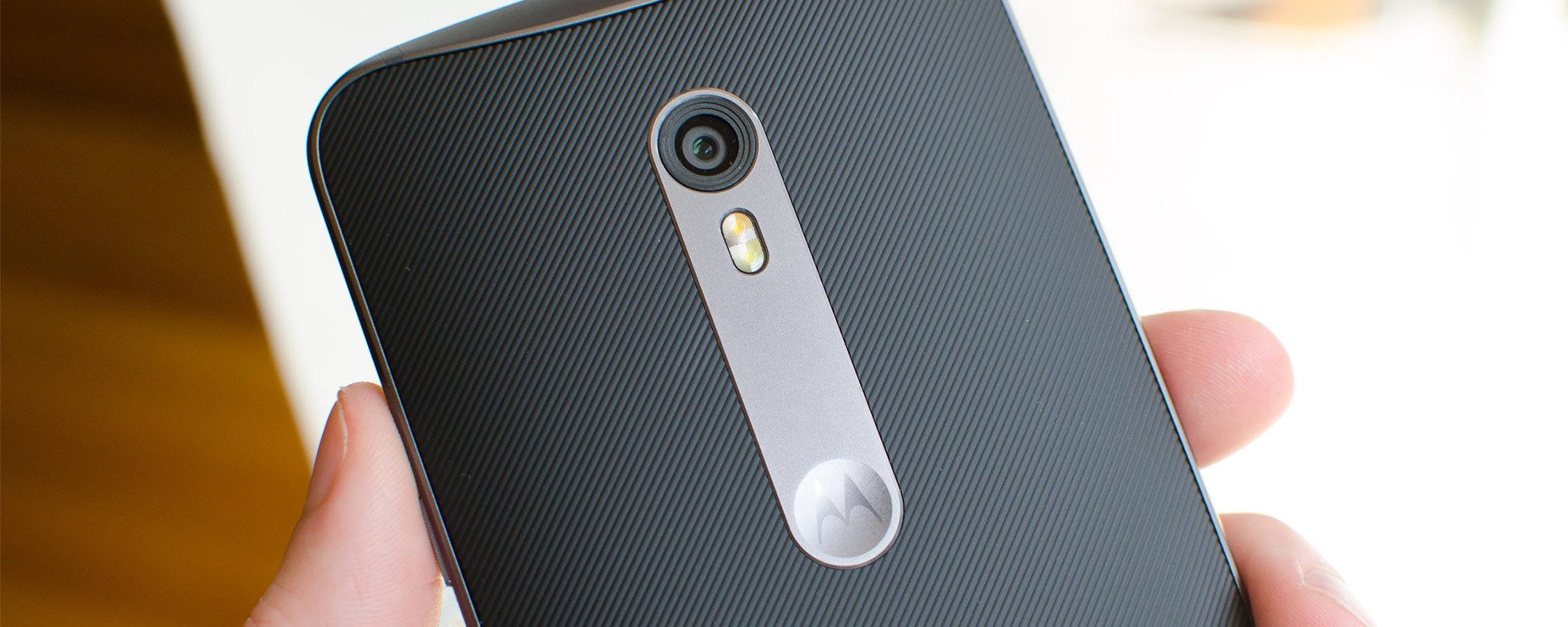Camera
For the past few generations, Motorola has failed to produce a great camera to go along with their typically very solid flagship smartphones. This year the company is promising it will be different, opting for all new hardware and improved firmware that they claim delivers "beautiful, true-to-life images in any light".
The rear camera in the Moto X Style is a Sony Exmor RS IMX230 1/2.4" 21-megapixel CMOS sensor with 1.12 µm pixels, paired with an f/2.0 28mm lens and a dual-tone dual-LED flash. There's no optical image stabilization in this camera, but it does capture 5344 x 4008 images in a native 4:3 aspect ratio as well as 4K 16:9 video.
On the front is a 5-megapixel camera with an f/2.0 lens and, surprisingly, a front-facing flash. Considering so many people take selfies these days, having a flash on the front does improve image quality in low light situations, and it wasn't as blinding to use as I thought it would be. Overall the front camera is actually quite decent regardless of the flash, and it's well suited to a variety of conditions.
Considering what Motorola has dished up in their past flagships, the Moto X Style's camera is very, very good. The 21-megapixel sensor captures a lot of detail in a single image, which in turn looks great when downsizing to a 1440p or 1080p display. Motorola hasn't gone overboard with sharpening filters either, which means a lot of detail is preserved when viewing 100% crops, unlike what you get on the Galaxy Note 5 or Galaxy S6.
The Style's camera exhibits above average dynamic range and good bokeh, which make wide shots and close ups look great respectively. I was particularly impressed with shots taken on sunny days: great saturation levels make images pop without becoming inaccurate, and metering is basically perfect in every photo I've taken in these conditions.
Photos taken in less-than-ideal lighting were a bit of a mixed bag from the Style, and this is where it falls behind the best mobile cameras from LG and Samsung. Some images in these conditions exceeded my expectations, while others looked surprisingly dull and underexposed for the subject at hand. I think a lot of this has to do with metering and could easily be tweaked in the software, which would make it a real challenger to the LG G4's mobile imagery crown.
The lack of OIS begins to hurt when taking images at night. Most of the photos I took in these conditions were dark, and this is where a longer shutter speed facilitated by image stabilization would have helped. I occasionally took decent low-light images, especially of well-lit city streets, and although there was no noise to speak of, artefacts were visible when viewing 100% crops to due noise reduction filters applied in post.
While the actual photos I took with the Moto X Style exceeded my expectations for a Motorola-produced smartphone, I was hugely disappointed with the camera app. The app is identical to what is included with the third-gen Moto G, and if it's unacceptable on an entry-level device, it's basically unforgivable on a flagship.
For starters, the Motorola Camera app is annoying and unintuitive to use, with every feature hidden away in a slide-out rotating panel. On top of that, Motorola has opted for tap-to-capture over tap-to-focus, which makes it hard to frame close-up images correctly, and puts you completely at the mercy of the automatic focus system.
Sure, the Style's autofocus is quick and there's zero shutter lag when taking images, but I'd far rather have tap-to-focus control when the autofocus system inevitably gets the focal point wrong from time to time. The alternative, available in the slide-out panel, is a focus ring you can drag around the image preview, which does give you focus and exposure control, but it's at the expense of convenience and speed.
Simply put, tap-to-focus is better than tap-to-capture, and Motorola should rectify this issue as soon as possible through a camera app update.
There's also a pretty serious lack of features in the camera app. You do get a decent enough HDR mode (with auto HDR), a panorama mode, slow motion video, and a timer mode, but that's literally it. Many other flagship cameras have cool features, such as manual modes and burst-shot editors, and I feel the Moto X Style should have these things as well, especially considering the quality of the camera's hardware.
Of course you could just download a third-party camera app from the Play Store, and I'd definitely recommend you do so. However an OEM shouldn't rely on other people to develop camera features for them, and with greater access to the hardware, Motorola could have built something far better than what a third-party app could provide.













